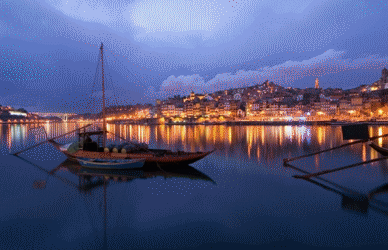
City of Porto
Located along the Douro river estuary in northern Portugal, Porto is one of the oldest European centres, and registered as a World Heritage Site by UNESCO in 1996.
Its settlement dates back many centuries, when it was an outpost of the Roman Empire. Its Latin name, Portus Cale has been referred to as the origin for the name "Portugal", based on transliteration and oral evolution from Latin. In Portuguese the name of the city is spelled with a definite article as "o Porto" (English: the port). Consequently, its English name evolved from a misinterpretation of the oral pronunciation and referred to as "Oporto" in modern literature and by many speakers.
One of Portugal's internationally famous exports, port wine, is named for Porto, since the metropolitan area, and in particular the adegas of
Vila Nova de Gaia, were responsible for the production and export of the fortified wine.
Porto charms with its narrow streets in the historical centre, classified as world heritage, with a view of the River Douro and Port Wine cellars, and its vibrant
and cosmopolitan city centre which, in recent years, filled with traditional or bolder restaurants (where you must try a "francesinha") and hotels. All of this makes
it an ideal destination for a conference.Porto is also a city of culture which has a world-class architecture, recognised with two Pritzker Awards, Siza Vieira
and Souto Moura, two architects from “Escola do Porto”. An example of this is Casa da Música, a “meteorite” designed by Rem Koolhaas, and the Serralves Museum of Contemporary Art, designed by Siza Vieira.
